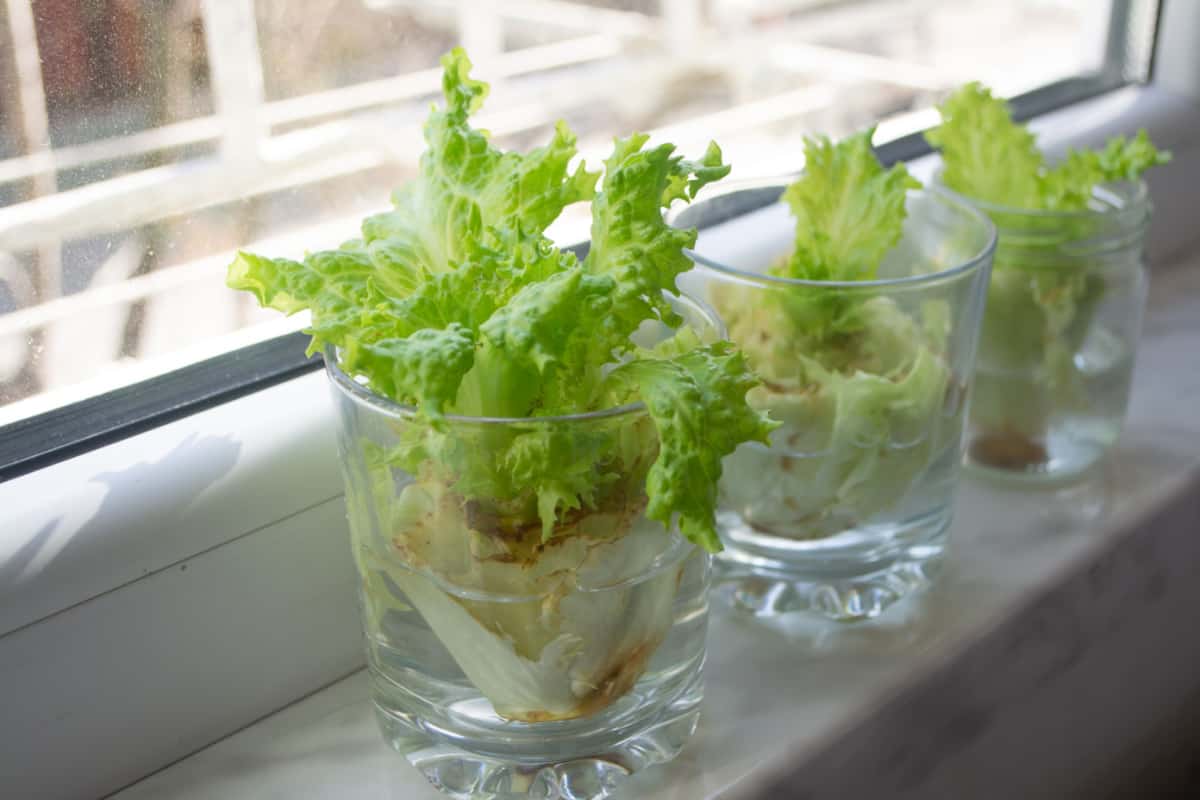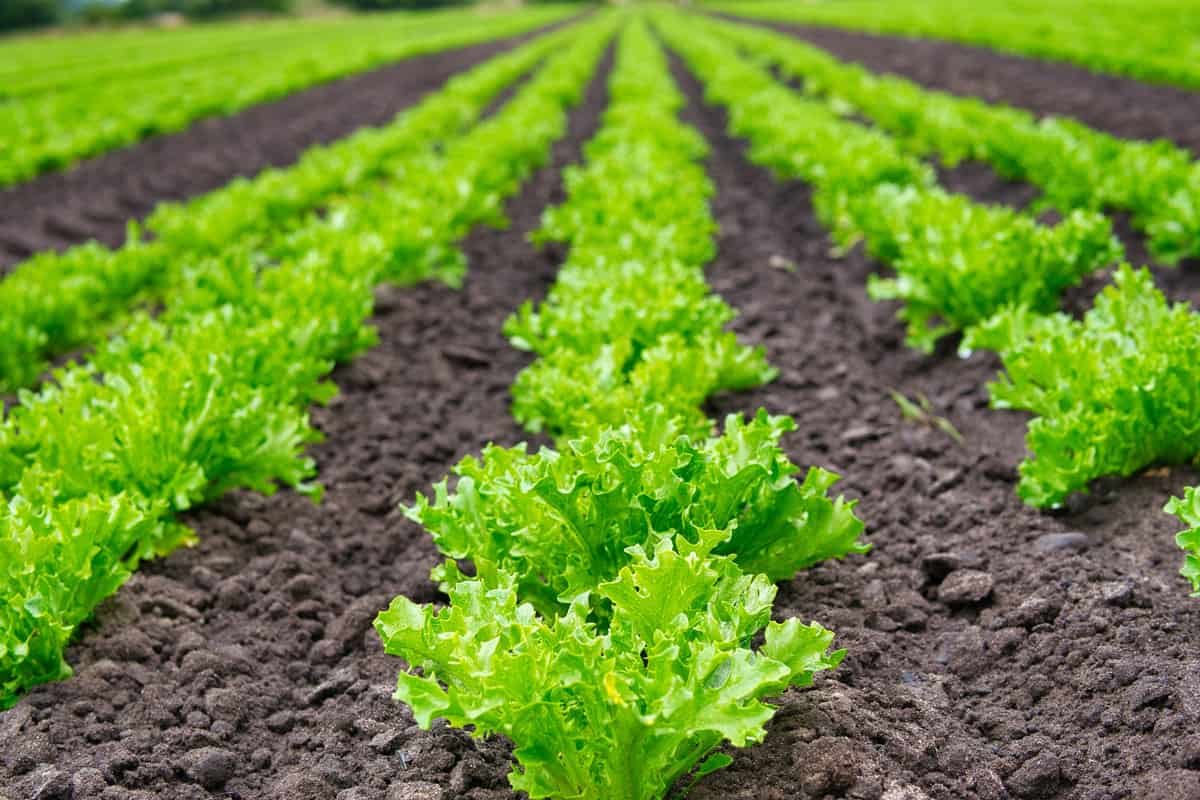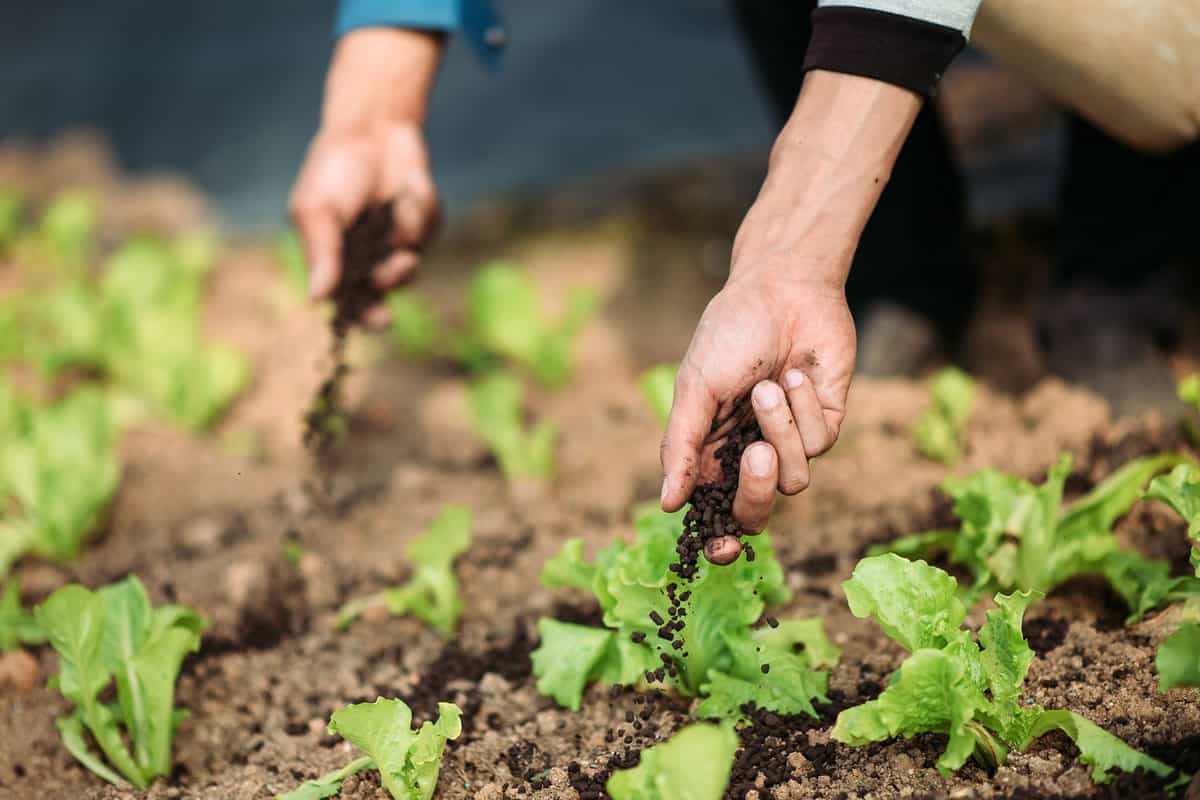Have you ever wondered if lettuce can regrow after cutting?
Good news for those with a green thumb and a love for leafy greens – it's possible to give your lettuce a second chance at life after harvesting!
Lettuce is not only a healthy and tasty addition to your plate but also an incredibly thrifty crop that can be coaxed to regrow, giving you more bang for your gardening buck.
Since you're the one nurturing it, you can take pride in the fact that your lettuce is homegrown, fresh, and full of nutrients.
Besides the obvious health benefits and money-saving aspects, regrowing lettuce is a fantastic way for you to connect with nature.
As you watch those green leaves sprouting back, you'll feel like a true garden-whisperer, unlocking the secrets of nature's endless cycle of life.
But how do you regrow them? Read on below.
Understanding Lettuce Regrowth
Lettuce is a versatile and hardy vegetable that can regrow after cutting, if the proper conditions are met.
Let's look at how these salad staples are grown.

How Lettuce Grows
When lettuce grows, it goes through different stages, starting with germination of seeds, followed by the formation of leaves, and then, eventually, the development of the lettuce head.
The new growth occurs from the central part of the plant, called the apical meristem.
During the growth process, lettuce needs consistent moisture, adequate sunlight, and proper soil conditions to thrive.
By providing these essential elements, you're giving your lettuce the best chance to regrow after cutting.
Ideal Cutting Techniques
To ensure successful regrowth, it is vital to use the right cutting techniques when harvesting your lettuce. Here are a few pointers to keep in mind.
Harvest Outer Leaves
Avoid cutting the entire lettuce head. Instead, focus on removing the outer leaves, allowing the inner leaves to continue growing.
This method will enable you to harvest multiple times from the same plant.
Leave the Center Intact
Preserve the apical meristem (central growing point) as this is where new growth occurs. If you damage this part, the plant may not recover.
Cut a Few Inches Above the Soil
To encourage regrowth, cut the lettuce about 1-2 inches above the soil level. This way, you leave enough plant material for the lettuce to regenerate new leaves.
Monitor Watering
After cutting, make sure to water your lettuce consistently. This will help to promote new leaf formation.
Can You Regrow Lettuce in Just Water?

Yes, you can regrow lettuce in just water. This is a great way to reduce waste and to always have fresh greens on hand. Here's how you can do it:
Save the Base
After you've used the majority of a head of lettuce, save the last 1-2 inches at the base.
Start in Water
Place the base in a bowl or jar with enough water to cover the bottom of the lettuce (about a half-inch).
Ensure the water only covers the bottom roots, not the entire plant, to prevent rotting.
Choose a Spot
Place the bowl in a spot that receives good sunlight, ideally near a window that gets a lot of light.
Lettuce is a cool-season crop, so avoid places that get too hot.
Change the Water
Replace the water every 1 to 2 days to keep it fresh and to prevent bacteria growth.
Wait and Watch
After a few days, you should see roots begin to grow at the base and new leaves beginning to form in the center.
It's an indication that your lettuce is ready to be transferred to soil for further growth.
Replanting in Soil
Carefully remove the lettuce from the water and plant it in a pot or garden bed with good quality potting soil, ensuring the newly formed roots are covered but the growing leaves are above the soil.

Continue to provide the plant with plenty of light and keep the soil evenly moist, but not waterlogged.
With good care, your lettuce should continue to grow and produce new leaves, which can be harvested as needed.
Transferring the lettuce to soil after initial growth in water can result in a larger, healthier plant with a longer lifespan, as it provides more nutrients for the plant to thrive on.
Remember, regrowing lettuce like this won't produce a full-sized head of lettuce.
Instead, you'll grow baby lettuce leaves, perfect for salads or sandwiches.
Here's a short video showing you how to regrow your lettuce cuttings in water:
Caring for Regrown Lettuce
Once your lettuce has been properly transferred in soil, follow these steps to care for your future harvest:
Water Regularly
Keep the soil consistently moist, but not soaking wet.
Water the regrown lettuce every few days, adjusting the frequency based on weather conditions and soil moisture.
Fertilize
Apply a balanced, slow-release fertilizer to the soil to support healthy growth.
Regular feeding can help boost the overall nutrient content in the greens and promote faster regrowth.
Check out this 8-15-36 lettuce fertilizer powder on Amazon.
Monitor the Growth
As the lettuce begins to regrow, keep an eye on its progress.
You may need to thin out any overcrowded plants or adjust the watering schedule based on the growth rate.
Harvest as Needed
Once your regenerated lettuce has reached the desired size, you can start harvesting the outer leaves or the entire head again, following the same cutting method as before.
Repeatedly harvesting leaves in this manner allows for continuous production of fresh greens.
Factors Affecting Lettuce Regrowth

You may want to be aware of these factors to ensure your lettuce is growing in optimum conditions.
Environmental Conditions
Proper environmental conditions are crucial for lettuce regrowth after cutting.
To ensure successful regrowth, you should pay attention to the following factors:
Temperature
Lettuce prefers cooler temperatures, ideally between 60 and 70°F.
Higher temperatures can impair growth and survival, as seen in a study on rocket salad.
Water
Keep the soil consistently moist, as lettuce has shallow roots and requires regular watering.
Be careful not to overwater, as this can lead to root rot.
Light
Lettuce generally needs 12 to 14 hours of sunlight daily for optimum growth.
Make sure your plants receive enough light, especially if you're growing them indoors.
Lettuce Varieties
Different lettuce varieties respond differently to cutting and regrowth. Some common lettuce types include:
Leaf Lettuce
This type of lettuce, such as romaine or oakleaf, is known for its ability to regenerate new leaves after cutting.
These varieties are ideal for a cut-and-come-again approach.
Get your green leaf lettuce seeds on Amazon.
Head lettuce
Varieties like iceberg or butterhead lettuce form tight heads that don't respond well to cutting for regrowth.
Instead, you may need to replant these varieties after each harvest.
When selecting a variety for regrowth, choose one with a proven ability to regenerate, such as leaf lettuce.
Benefits and Drawbacks of Regrowing Lettuce

As with any technique, regrowing lettuce comes with its own set of benefits and drawbacks.
In this section, we will explore the advantages and disadvantages of regrowing lettuce, shedding light on the potential it holds for both individuals and the environment, as well as the challenges that may arise.
Economic Advantages
Regrowing lettuce after cutting can provide you with several economic benefits.
First, you can save money by reducing the need to purchase new lettuce seeds or seedlings.
By allowing your lettuce to regrow, you're able to harvest multiple times from the same plant, simplifying the planting process and reducing overall costs.
Another economic advantage is the potential to sell excess lettuce from your garden or farm due to the increased growth potential.
This can provide you with an extra source of income as well as help reduce food waste.
Possible Limitations
Despite the economic benefits of regrowing lettuce after cutting, there are some potential limitations to consider.
One of the main concerns is the risk of diseases and pests. Some plant diseases, such as Escherichia coli contamination, can be transferred to your lettuce crop if proper growing practices are not followed.
Also, some pests may target regrown lettuce, compromising the health and quality of the crop.
Another potential limitation is the reduced quality of lettuce after multiple harvests.
The plant may become weaker, more susceptible to disease, and produce smaller leaves or stems as time goes on.
The flavor, texture, and nutrient content of regrown lettuce might decline somewhat, which could impact your enjoyment of the vegetable or the marketability of the crop if you're selling it.
Finally, it's essential to consider that not all lettuces are well-suited for regrowth.
While most varieties can regrow to a certain extent, others may not be as resilient, resulting in suboptimal growth after cutting.
Manage Your Lettuce Expectations
It's essential to have realistic expectations when it comes to regrowing lettuce.
You might not achieve a full-sized head of lettuce as the initial harvest, but you can still enjoy some fresh, tasty greens from your efforts.
Plus, regrowing lettuce is an excellent way to reduce waste and get the most out of your produce.
So, go ahead and give regrowing lettuce a try!
Embrace the fun of experimenting with your food and be proud of your sustainable choices.
Keep in mind that patience and persistence are key to successful regrowth, and before you know it, you'll be enjoying your very own homegrown lettuce.
Happy gardening!
Was this article helpful? Check out these other articles:


